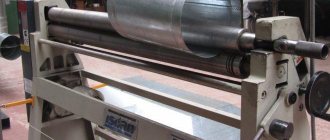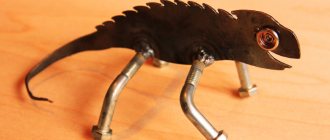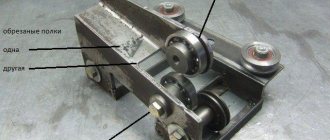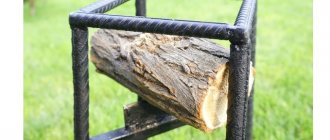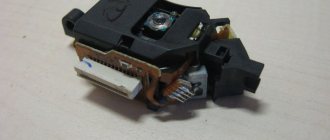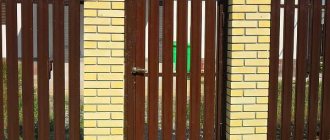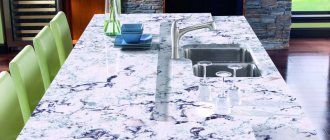Blacksmithing has long been one of the most popular hobbies for many people. There is nothing strange in this, since with the help of forging you can create real works of art. Of course, a hobby such as metal forging at home has certain requirements.
The first step is to take care of the availability of a workshop, the necessary tools and various devices. And most importantly, you will need special knowledge about this complex process. Forging metal will require good artistic taste and a fair amount of patience, only then can you count on the desired result.
This is not to say that forging metal at home is easy, but nothing is impossible.
How to heat workpieces correctly?
The final quality of a metal product largely depends on the selected temperature regime for heating the workpiece. The appearance of the product and its durability also depend on this. It should be taken into account that the metal can be processed only when it is brought to the temperature required for forging. Thus, the metal’s resistance decreases, it can be deformed, and the degree of ductility becomes very high.
It is necessary to take into account that each metal has its own temperature regime for forging. This temperature regime is determined by the structure of the workpiece and its chemical composition.
The most common mistakes when forging
In order for everything to work out at the highest level, you should avoid the most common mistakes that novice masters make.
- Do not heat the metal more than is required for optimal processing. Otherwise, the plasticity of the material will sharply decrease, and the structure will become coarse-grained, which negatively affects the result of the work. If the temperature continues to rise, the workpiece may burn out.
- If the workpiece is not heated properly, it will not be possible to achieve the ductility necessary for high-quality forging. This can cause the metal to crumble, after which it will no longer be possible to work with it. The integrity of the workpiece will be compromised and cracks will begin to appear.
Thin sheet metal welding technology
Thin sheet metal (up to 4 - 5 mm) is usually joined end-to-end. This can be done with flanged edges or with a lining. The main problem when working with such workpieces is that any careless movement can lead to burning of the material. Therefore, it is extremely important to remember the following information:
- with a workpiece thickness of 2 mm, the cross-section of the electrode should be 2 mm, the operating current should be 50-60 A;
- with a workpiece thickness of 3 mm, the cross-section of the electrode should be 3 mm, the operating current should be 110-120 A;
- with a workpiece thickness of 4-5 mm, the electrode cross-section should be 3-4 mm, the operating current should be 110-160 A.
There are two technologies for joining thin sheet metal - continuous and multi-spot welding. In the first case, the electrode must be guided, without tearing it off, along the entire seam. The second involves extinguishing the arc and is the safest solution.
Image #4: spot welding thin metal
Video on the topic “Forging steel, they do it like this!!!”
Iron should be forged while it is hot, this was said by distant ancestors who knew a lot about blacksmithing. In blacksmithing, it is very important to maintain the required temperature. If everything is done correctly, you will get a beautiful high quality product.
Attention, TODAY only!
Is it difficult to make a knife yourself? If you approach the process correctly, you will end up with a reliable and durable product. It is important to choose the right workpiece material. Metal drills are often used for this; they are almost ideal for forging a knife. Both household models and so-called designer products are made from drills.
Required materials and tools
First of all, you should decide on the brand of drill, and in particular, the metal from which it is made. Experts consider the best option to be a model made of steel R6M5. It belongs to the category of high-speed tool tools. Its advantage is the possibility of processing by forging and the relatively low temperature conditions for this.
It is important to choose the right size of the workpiece, because the dimensions of the product will depend on this. So, a drill with a diameter of 10 mm with a shank has a length of 87 mm. Having decided on these parameters, you need to find out the recommended heat treatment modes for the workpiece for full forging at home.
As you can see, for full production you will need at least a forge (). In this case, you first need to straighten the cutting part of the drill, which can only be done after it has been heated to at least the minimum processing temperature.
If you don’t have a furnace, then the way out of this situation is to make a temporary furnace yourself. This will require fire bricks, a base for their installation and any mechanism for supplying air. As the latter, you can use a simple household vacuum cleaner with a reverse exhaust mode.
In addition, to fully forge a knife from a drill, you will need the following materials and tools:
- Vise.
- Pliers, a “gas” wrench (with its help it is convenient to straighten the drill).
- – you can use a piece of rail or a similar metal surface.
- Set of hammers for machining. For a single production, a standard hammer with a head weight of 400 to 600 g will be sufficient.
- Household grinding machine.
It is best to carry out work outdoors or in a non-residential area with good ventilation. To heat the drill, use coal or a gas burner. The latter option is preferable, since the flame from it is characterized by a constant temperature.
Manufacturing procedure
After preparing all the necessary components, the drill should be aligned. Under no circumstances should you do this without preheating. After placing the workpiece in the forge, wait until it heats up to the desired temperature. A clear sign of readiness for processing is a uniform red color over the entire surface. It is then removed from the oven and secured with the tail end in a vice. Using a pipe wrench, carefully align the cutting edge. It is recommended to carry out this work in several stages to avoid cracks and breakage of the product.
Only after this can you plan the outline of the future knife. It is not always possible to correctly “guess” the finished shape of the resulting workpiece. As soon as the drill has been deployed, a drawing is made that will serve as a personal “technical” document for making a knife.
The next stage is forging until the product is given the desired shape. During its implementation, you need to be prepared for the following points:
- Labor intensity. On average, in order to make a flat workpiece from an almost round drill, it will take from 2 to 4 hours of work.
- It is recommended to start with the tail section, on which the handle will later be installed.
- In some models, the shank is made of steel 45. Its forging temperature is slightly higher - 1250-700°C. This must be taken into account when warming up.
After forming the workpiece, it should be given its final shape. This is best done using a sander. Manual processing will take a lot of time, since R6M5 steel is quite hard. For hardening, you can use used machine oil (all). It is important not to overheat the steel.
What else should you consider when making a knife from a drill? The most common mistake is a blade that is too thin. During processing on a grinding machine or during sharpening, it is likely to break. The optimal blade thickness should be 2-2.5 mm.
- Holes for attaching the handle can be made by drilling or electrolysis. The latter option is more convenient if the tail section is made of 45 steel.
- To give a good appearance, GOI paste is used.
- As a workpiece, you can use not only a drill, but also a part of a car spring or a file.
Sharpening is best done first with a grinder, and then “finish” the edge of the blade manually with a whetstone. You also need to remember that according to the law, a knife is considered a bladed weapon with a blade length of more than 90 mm. A double-edged blade of 50 mm or more also requires a permit to carry and store. This is very important, since the Criminal Code of the Russian Federation provides for measures for the illegal manufacture, storage and carrying of bladed weapons.
Since ancient times, blacksmithing has been considered the privilege of real men. This process fascinates with its beauty and mystery, and the secrets of some masters of this craft still remain mysteries and are kept strictly secret. This especially applies to the manufacture of bladed weapons, which were previously produced in closed forges under guard protection.
Today, forging a knife at home has become available to almost every person, although this process itself will require some skill and the availability of a tool. This kind of work can be done on the balcony, where there is access to open air and the ability to forge freely.
At home, forging a knife involves heating the metal on a gas stove or in the oven, but you can also use small muffle furnaces or even burners. You will also need a file, sandpaper, a drill with a drill bit, pliers, an emery stone and two hammers of different weights. You should also stock up on metal. For a good forged knife, spring steel or a flat file will do.
You will have to work with a workpiece heated to 900 degrees, so you should take all the necessary safety measures. It is also recommended to use an anvil or a metal blank, otherwise forging the knife will be impossible.
First, take a metal blank and heat it until red. This will be approximately 900 degrees. Then, using a large hammer, we begin to process it so that the result is a block of metal, equal in length to the future knife, and in thickness - several millimeters thicker than it. Then we heat the workpiece again.
Forging a knife usually starts from the part where its handle will be. This will help in the future to hold the forging. We apply blows with a large hammer to give the knife the desired appearance, and with a small hammer we level the workpiece on a plane and relieve tension. You should not let it cool too much, as then there is a danger of delamination or chipping.
It should also be remembered that such forging of a knife does not involve destruction of the crystal lattice of the material, which means it is necessary to give it a shape that is closest to the final product. This involves the formation of all elements of the blade descent and precise production of the spout.
After this treatment, the knife is finished with a file or on an emery wheel, but not sharpened. It needs to be hardened in oil, which must be done very carefully at home. The part is heated to a bright red color and placed in a working area, where it remains until it cools completely.
The next stage is the manufacture of the handle nozzle and sharpening. Here everyone shows their talents and abilities. In the simplest version, the handle is made of thick rope, wrapped around it, and the sheath is sewn from rough leather. In this case, it is often not threads that are used, but copper or aluminum rivets. Sharpening is done using sandpaper or a file.
Making a knife using the forging method can be considered the simplest and most accessible at home.
Blacksmithing is one of the oldest methods of metal processing. However, even in our age of high technology development, it has not lost its significance and is even gaining great popularity.
Forging with your own hands is a rather difficult technological process; for this you need to know at least the basic techniques for working with a workpiece, as well as the rules for heating and hardening the metal. You also need to have an idea of how to use the equipment. What skills do you need to have to make products using the blacksmith method and how to forge metal?
Forging stages and techniques
Hot forging includes a large number of techniques used in metal processing. However, the technology itself consists of main stages.
- Heating the workpiece.
- Forging.
- Metal stabilization.
- Hardening (if necessary).
Each individual stage is of great importance. Incorrectly maintained heating temperature of the workpiece will lead to further damage to the product, the same applies to too rapid cooling.
When forging, you also need to follow the technological process, otherwise the workpiece will simply be damaged. At this stage, many techniques are used depending on what product is being made.
Metal stabilization involves gradual cooling of the finished product. This technological stage promotes normal crystallization of highly heated material. The main task is to prevent damage to the internal structure, the appearance of shells and cracks.
Tempering is used to impart hardness to the finished product by changing the crystal lattice during high temperature heating. Most often in blacksmithing, this stage is carried out when making tools that will experience heavy loads during use. The main requirement for hardening is not to make the metal too brittle (overheat) or, conversely, too soft.
So, how do you forge metal yourself and what techniques are used at each stage of the work?
Electric arc welding and metal cutting technology
An electric arc allows you to heat up to 6000° and melt the metal, forming a welded joint. Such welding can be automatic, semi-automatic and manual. In the first case, special welding equipment is used, but the technology comes down to fairly simple steps. The device is connected to the network, one of the cables is connected to the workpiece, the second is connected to a holder with an electrode, which taps on the metal, creating an arc. Heat is transferred and a weld pool is created. The joint between the parts is filled, creating a permanent connection. With semi-automatic technology, a wire is used as an electrode, fed into the welding zone using a special mechanism. With the manual method, the welder himself guides the electrode, holding it in his hands.
Electric arc welding technology is also used when cutting workpieces. For this purpose, consumable and non-consumable electrodes (graphite or carbon rod) are used.
Image #5: manual arc welding
Heating the workpiece before forging
Usually, for forging steel objects, ready-made blanks are used in the form of cast steel bars of the required size. With your own hands, in this way you can make not too large objects and small tools, so I use a forge for heating.
It is best to start heating the workpiece immediately after casting it, when it has cooled to a dark red color. You can also preheat the material before placing it in the fireplace. Preheating is carried out from the ends to the middle to avoid the appearance of stresses and cracks in the metal structure. In this case, the temperature is maintained within no more than 300 degrees. This indicator is checked by pouring machine oil onto the surface of the blank: if it burns, then the workpiece is moved to the fireplace.
The temperature in the forge is initially set low, gradually increasing over time to the desired limit.
It is a mistaken belief that the more you heat the steel, the better it is forged. When strongly heated, such material actually becomes softer, however, do not forget about processes such as overheating and burning of the metal.
Overheating changes the crystal structure of the workpiece material and during subsequent forging it can simply fall apart into separate fragments.
Overburning changes the chemical properties of steel when more carbon is burned out of its composition.
According to the table, you can understand what temperature limits should be adhered to when heating different types of steel during forging. The degree of heat of a metal is determined by its color spectrum. For example, if the workpiece is painted dazzlingly white, it means it is heated to 1200-1300 degrees. The darker the color of the metal, the colder it is. The photo shows a diagram of the relationship between the color spectrum and temperature.
How to determine heating temperature by color
Advantages of welded products
One of the main advantages of things created using artistic welding is their beautiful and original appearance.
This method makes it possible to produce hundreds and thousands of options for finished products and parts that can perform a practical function or serve solely as decoration. Welding allows you to create elegant and attractive objects that cannot be replicated exactly.
Although it is a relatively new art form, unlike forging, it is gaining more and more attention. One of the centers of artistic welding is the Paton Institute.
Another advantage of iron products made using artistic welding is their high strength and reliability. Such items, be it ornaments for decorating a fence or furniture for the street, are not afraid of increased mechanical loads, have a long service life, do not require specific or complex care, maintaining not only their physical qualities, but also their appearance. For additional protection of artistic products, you can use special compounds to repel dust, dirt and moisture.
Metal crafts combine well with other objects and various materials, including brick, block, stone and wood.
If, for example, welded decorative elements are intended to decorate a fence or gate, they look great in combination with corrugated sheets, red and facing bricks, concrete and other materials.
Furniture created by artistic welding looks beautiful in a classic, Baroque, Romanesque, Greek style interior, and small items can decorate a room decorated in the High-Tech direction.
Forging process
When the workpiece is heated to the required temperature, it should be crimped. This must be done to eliminate various cavities, voids and cracks in the structure of the blank. The process is carried out as follows. The workpiece is pulled out of the forge and its surfaces are passed with hammer blows from the middle to the edges (first the top, and then the bottom).
Before planning the manufacture of things, you should expect that during crimping the workpiece will lose part of its volume in the form of scale. It forms on the surface of the blank, from where it is removed using tools: pliers and brushes.
When the crimping is completed, they move on to the actual forging of the product. In this case, various techniques are used to obtain the desired shape.
In order for thickenings to form on the surface, the method of local precipitation is used. This technique is also used if you need to reduce the length of the workpiece and make it thicker. To do this, the master strikes from above the workpiece located in a vertical plane. In this case, the metal will deform and thicken. It is convenient to do full casing by clamping the heated workpiece in a vice, but you need to hurry, otherwise the metal will cool very quickly from the cold clamping device.
After upsetting, you need to crimp again to give the structure uniformity!
One of the types of precipitation is landing. It is used when it is necessary to obtain thickening on the surface of a product. To do this, the workpiece is heated only at the landing site.
If, on the contrary, it is necessary to lengthen the workpiece, the so-called broaching is carried out. There are three ways in which this technique can be done. The simplest is broaching on flat strikers. To do this, the workpiece is heated. Next, they pass it with a hammer along its entire length and, turning it 90 degrees, do the same job. They try to carry out the reception in one warm-up. Quite often they use a subtype of broaching called flattening along the entire length. The main tools are a hammer or sledgehammer.
Sometimes when forging at home you need to make a through or blind hole in the product. In this case, use the firmware technique. The main devices are punches of various sections. In this case, the workpiece is heated and placed on the anvil on top of the round hole. Having installed the punch, they strike it. The firmware can be done on one side or on both.
To divide a workpiece or product into parts, a chopping method is used. The metal is heated to a dark red color and, placing it on an anvil, three-quarters of its thickness is cut with a blacksmith’s chisel. After which the forging is turned over and the remainder is chopped using the same tools.
I also quite often use the method of bending blanks in blacksmithing. Simple forms are obtained using an anvil with holes as the main device. More complex forged elements are formed by bending the blanks on various templates.
Another technique often used in artistic forging is twisting. At the same time, the workpiece is heated and rigidly fixed in a vice, the other end is turned using a crank as the main equipment.
When the product is ready, the metal needs to be stabilized.
Tools and drawings
To practice artistic welding using rolled metal, you need the following devices and equipment:
- a machine for manual argon arc welding (they use it to weld non-ferrous metals and stainless steel), a torch for it, filler wire and an argon cylinder;
- paper. Without it, it is impossible to draw drawings with determination of dimensions and small nuances that are difficult to take into account when visualizing without a plan. However, in the modern world you can also use computer programs;
- stationery for marking (pencil, ruler, protractor);
- working surface, which must be made of materials resistant to high temperatures and flames.
Before starting work on artistic welding, it is necessary to make a drawing and think about what size the product will be, what it is intended for, and what style it should be combined with.
The finished image is only part of such a drawing. In addition to the sketch, it is necessary to draw individual details, indicate connection points and their number, and examine the object in several planes.

